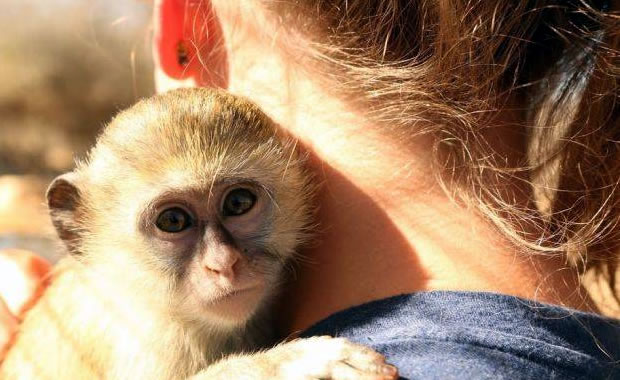Creature Profile
The golden lion tamarin is one of the most endangered mammals and also one of the most striking because of its silky golden hair and beautiful mane that frames its face. This species is only found in Rio de Janeiro of Brazil. Adults only reach about the size of a squierrel and are between 8 and 13 inches long with a tail length of 12 to 15 inches. The average weight is about 620 grams (1.4 lbs). Males are usually larger than females. They have small, rounded heads, and their faces are flat with widely spaced nostrils. Their bodies are covered with long, soft silky, pale golden to reddish-brown fur. They have long claws with delicate claw-like nails that help with their movement in the trees and also with foraging for small prey.
This species prefers extremely humid tropical forest for its habitat where there are plenty of trees entangled with vines and where there is lots of fruit. To hide from predators and to keep warm, they sleep in tree holes 10 to 30 meters from the ground. They are active only in the day, and remain in tree holes at night. Diet consists of spiders, snails, small reptiles and amphibians, eggs, small birds, fruits and flowers. They prefer to live in family groups of 2 to 8, and food sharing helps to maintain social bonds in the family. Breeding occurs between September and March, and females typically give birth to twins after a gestation period of 130 to 135 days. All members of the group help to care for the young.
This species has suffered from poaching for its hide and capture for the pet trade. It also suffers from loss of habitat, disease, and hunting by predators. Todays population estimate is around 800, but this species can also be found in many zoos. Captive breeding programs have been establish to preserve the species and have been successful with reintroducing tamarins into the wild.
Wikipedia Article

|
Wikipedia Article Copyright Notice: This article is licensed under the GNU Free Documentation License. It uses material from the Wikipedia article "Golden lion tamarin". |
More Links about the Golden Lion Tamarin:
Reference Links:Golden Lion Tamarin - Wikipedia
May 11, 2017
Glenn, C. R. 2006. "Earth's Endangered Creatures - Golden Lion Tamarin Facts" (Online). Accessed 4/25/2024 at http://earthsendangered.com/profile.asp?sp=982&ID=11.
Need more Golden Lion Tamarin facts?




